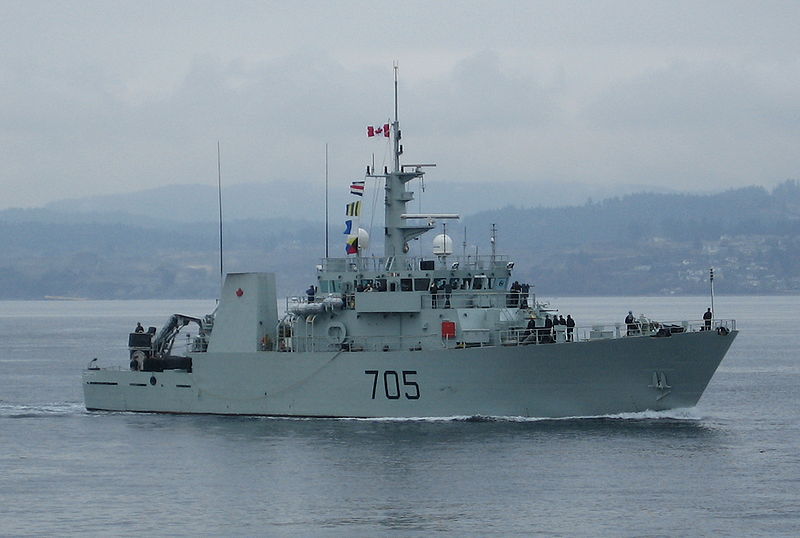Canada requires new Maritime Coastal Defence Vessels (MCDVs) before we retire our present 12 Kingston-class coastal patrol ships… Which are really minesweepers, also filling patrol and training roles. About These coastal patrol ships are about 55 m long and have a displacement of about 1,000 tons when fully loaded.
Canada’s present patrol ships had to fill many roles it was never designed to do. The role of minesweeper however, changed. Leaving it to do coastal patrol (which it is too slow for) and training, which it is useful but outdated.
The Kingston class has actually served us well, but are not scheduled for a mid-life upgrade. (I believe they are now being refitted for a 5 year life extension). Replacement has not fully been settled. Our arctic patrol ships are supposed to pick up some of their duties. While planners have scheduled 4 new Maritime Coastal Defense Vessels (MCDVs) with an option for 4 more.
Updating the Maritime Coastal Defense Vessels procurement plan to the new reality, of not finishing our new Surface Combatant Vessels till much later. We now need this class to fill in the gap of not having enough ships by 2040. We will need these patrol ships before we retire our Kingston-class patrol ships or any of our City-class (Halifax-class) frigates. We should be able to churn out 6-8 of these Offshore Patrol Vessels (OPV) very quickly for the price of 1 of our Canadian Surface Combatant ships. The OPV would free up our Type 26 (CSC) ships from anti-piracy duties and coastal patrols for roles more intended for a warship like blockades or sailing through the South China Sea.
What are Canada’s choices? First off, let us not make the same mistake we made with our minesweepers. Technology is ever changing and modular design is just part of a successful design. Patrol ships must be fast, at least as fast as our Surface Combatant Vessels (cruising speed). These offshore patrol ships must be blue water capable. Enforcing fishing, anti-pirating and also filling the capability gap that is going to occur between retiring our old frigates and when we slowly bring online our new Canadian Surface Combatant ships.
This means they must be a class between a large corvette and a frigate. Examples of such a ship would be the K 130 corvette, the Arafura class patrol ship which can land Cyclones and has a hanger for drones or our Griffon helicopters, the Holland-class Offshore Patrol Vessel (the only patrol ship with a hanger large enough for our Cyclone helicopters) or U.K.’s River-class Offshore Patrol Vessel (can land a Cyclone but has no hanger). These ships are going to have to fill Canada’s capability gap that is going to occur before our Surface Combatant ships will be ready.
To ensure coastal defense and help fill gaps in future roles these vessels should include anti-submarine capabilities, in that they could launch/land/refuel an AW159 naval Wildcat or our CH-148 Cyclone helicopter. Canada should strip the retiring frigates of their systems and weapons (which have just finished being updated in 2020) and put them on the patrol ships.
Our very capable Surface Combatant ships (Type 26) will be filling the role of a heavily armed frigate/sub-hunter, great for blockades and escort duties, but are overkill for anti-pirating roles off of Africa or South America which is why we need new coastal patrol ships.
Canada requires procurement planning now for new Maritime Coastal Defense Vessels (MCDVs). We need them in service before we retire our present 12 Kingston-class coastal patrol ships.
image sources
- 800px-HMCS_WHITEHORSE: Webber | Public Domain Mark 1.0
